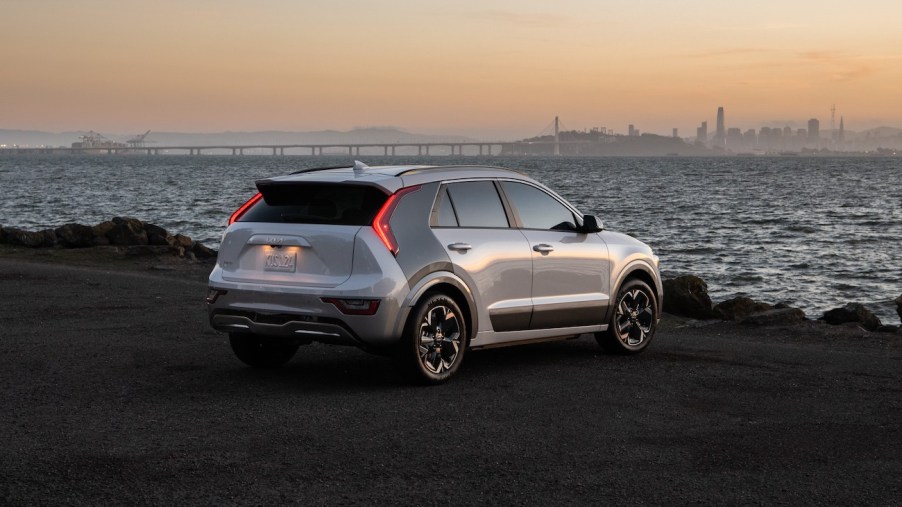
7 Differences Between the Kia Niro EV and Hyundai Kona Electric
Kia has started electrifying its lineup, and one of the first Kia cars to get an EV option is the Niro. It’s the same story for Hyundai, and one of Hyundai’s first electrified cars is the Kona Electric. Despite the fact that the Kia Niro EV and the Hyundai Kona Electric are both EV options of gas-powered cars and despite the fact that Hyundai and Kia are almost the same company, these two EVs have at least seven differences between each other.
1. The Kia Niro EV and Hyundai Kona Electric have different pricing
TrueCar compared the two EVs and one of the biggest and most immediate differences between them came from their starting prices. The Hyundai Kona Electric is much cheaper as it starts at under $35,000 MSRP. The Kia Niro EV, meanwhile, starts at almost $41,000 MSRP. Those prices are before tax credits and other incentives, but that’s still a price difference of about $6,000, which is huge for the average household.
2. Slight different range numbers
Another important aspect when it comes to owning an EV is its range numbers. Both have a battery pack that’s around 64 kWh, and both come with front-wheel drive. However, the Kona Electric ends up getting 258 miles on a single charge, while the Niro EV gets 253 miles on a single charge.
3. One EV is more efficient with its energy
Part of the reason why the Hyundai Kona Electric has more range is because it’s more efficient with its energy than the Kia Niro EV. The Kona Electric gets 134 MPGe in the city and 106 MPGe on highways, for 120 MPGe combined. The Niro EV, meanwhile, gets 126 MPGe in the city and 101 MPGe on highways, for 113 MPGe combined.
4. There’s a big difference in terms of their max cargo capacities
The bigger reason why the Hyundai EV is more efficient, however, simply comes down to size. The Kia Niro EV has a much larger cargo capacity than its Hyundai peer, and that tends to hurt its fuel economy. The Niro EV has 22.8 cu. ft. behind the second row, and it maxes out at 63.7 cu. ft. when the seats are folded. The Kona Electric has 19.2 cu. ft. behind the second row, but it only maxes out at 45.8 cu. ft. of space.
5. Their electric motors are different
Both EVs have a single powertrain option, and it’s a single electric motor that generates 201 hp. That being said, there is a significant gap between the two EVs’ torque outputs. The Kona Electric gets 291 lb-ft of torque, while the Niro EV only makes 188 lb-ft of torque. The Hyundai also has a horsepower RPM of 3,600 compared to the Kia’s 6,000 RPM.
6. The Kia Niro EV has a bigger touchscreen
One of the reasons why the Kia Niro EV costs more is because it has more features inside the cabin. Kia gave the Niro EV a 10.25-inch touchscreen and a 10.25-inch digital gauge cluster display, both as a standard feature. In comparison, the Kona Electric starts with an 8.0-inch touchscreen. Hyundai does offer a 10.25-inch touchscreen and a 10.25-inch digital gauge cluster display on the Kona Electric, but it’s an optional upgrade.
7. There are differences between their standard features too
It’s a similar trend when it comes to other interior features. For example, Kia gave the Niro EV a navigation system as standard, but that’s an optional feature for the Hyundai Kona Electric. The Kia also starts with a dual-zone automatic climate control system, whereas the Hyundai gets a single-zone version. On top of that, the Niro EV starts with parking sensors, while that is an option for the Kona Electric.



